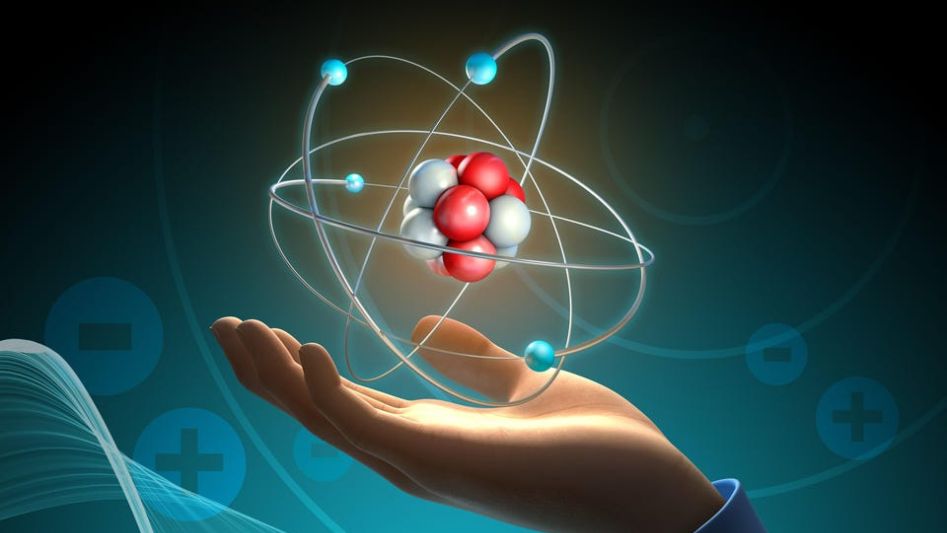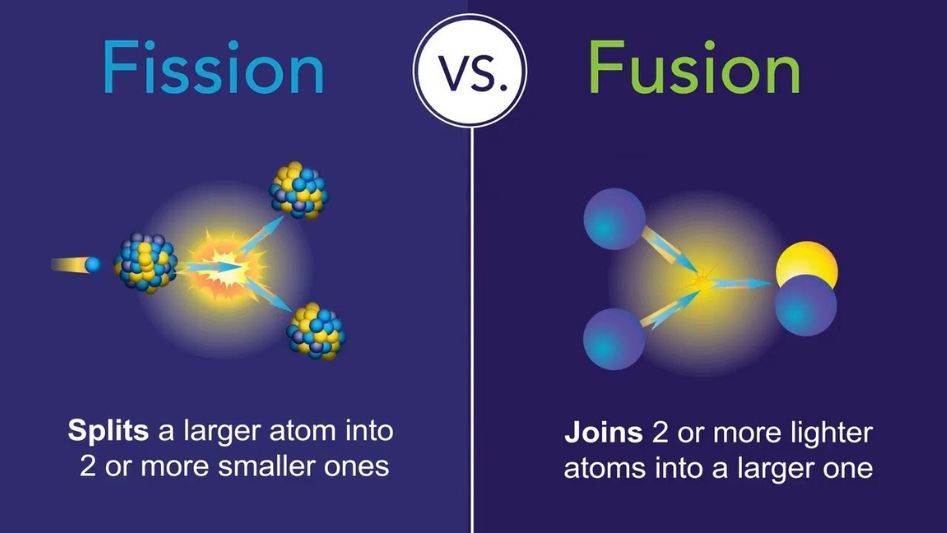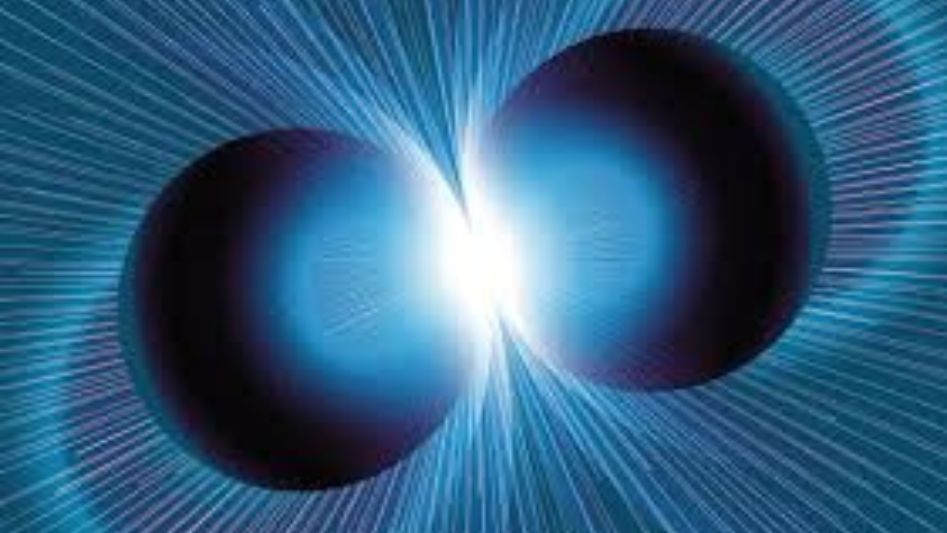Learn the difference between fission vs fusion, two types of nuclear reactions that have significant implications in energy production and weapon development.
Table Of Content
Both fission and fusion are natural atomic processes that unleash enormous quantities of energy; nonetheless, these two processes couldn’t be more different from one another. In the process of fission, a single, typically heavy atomic nucleus is divided into two smaller nuclei, while in the process of fusion, two or more light atoms are brought together.
Atoms are made up of a nucleus that is composed of both protons and neutrons that are bonded together. It’s possible that radioactive elements like uranium have several of these particles tucked away in their atomic cores.
The process of fission takes place when heavy atoms like uranium undergo spontaneous decay, which causes the nuclei of the element to divide. Each of the halves that are produced has a mass that is marginally lower than that of the initial atomic core, and the mass that is lost is turned into energy.

After receiving a personal letter from nuclear scientist Otto Hahn in December 1938, physicists Lise Meitner and Otto Frisch independently uncovered the fundamental principles that underlie the process of fission. Experiments conducted by Hahn demonstrated that uranium atoms will split if they are subjected to neutron bombardment. Meitner and Frisch utilized the emerging field of quantum mechanics to provide an explanation for why this phenomenon occurred.
The catastrophic repercussions of their finding, which was taking place in the midst of World War II, were quickly brought to the attention of all three of the researchers. If employed to create anything like an atomic bomb, several fission processes taking place at the same time have the potential to unleash a significant quantity of destructive energy, despite the fact that a single fission event may only release a moderate amount of power.
Nuclear Flight for Energy and Weapons
The natural process of fission in an atom of uranium results in the release of a neutron, which then proceeds to wander aimlessly. In the event that this neutron collides with any additional uranium atoms in the vicinity, those atoms will also split, resulting in the initiation of a chain reaction. According to the United States Department of Electricity, in 1951, engineers constructed the first power plant using the technique of nuclear fission to create energy. This facility was a nuclear power plant.
This procedure is subject to stringent monitoring and management in nuclear power plants. The heat produced by fission may be used to bring water to a boil, which in turn creates steam that can drive a turbine.
However, when an atomic bomb is detonated, the cascade chain reaction spirals out of control, and the rate of fission accelerates at an ever-increasing pace. This causes an enormous amount of power to be released in a very short period of time, which results in the deadly boom that the bomb produces.
Why Fusion Doesn’t Produce Energy Yet
The plasma core of the International Thermonuclear Experimental Reactor is about 50 percent complete. When it is finished, this will be the tokamak complex, and once it is finished, it will host plasma that is ten times hotter than the sun.

Fusion, on the other hand, has not yet been explored to its full potential as a human power source. In the process of nuclear fusion, two nuclei of a lighter element, like hydrogen, must overcome the electromagnetic repulsion that exists between them in order to combine into a single heavier nucleus.
The new entity has a mass that is just marginally lower than that of the two nuclei that were used in the reaction, and similar to the process of fission, the missing mass is transformed into energy. To generate enough power to smash atoms together until they cling together, however, is not a simple task and often needs the harsh environment that can only be found at the core of a star.
Engineers have long harbored the hope that one day they would be able to create sustained fusion reactions here on Earth. According to the International Atomic Energy Agency, the production of nuclear waste via fusion power would be far lower than that of fission power, and the fuel source would consist of comparatively common light elements, such as hydrogen, rather than the more scarce uranium.
However, producing fusion and keeping it going might be challenging. As part of the International Thermonuclear Experimental Reactor, a magnet that is as tall as a four-story building and 280,000 times more powerful than the magnetic field of Earth has been constructed as part of an international experiment. The goal of this experiment is to determine whether or not it is possible to generate energy through the use of sustained nuclear fusion (ITER).
However, the International Thermonuclear Experimental Reactor (ITER), a scientific collaboration involving 35 nations, has seen several setbacks throughout its development and is not projected to produce more electricity than it uses until at least the 2030s.
Conclusion
Summing up, fission and fusion are two distinct processes that both result in the release of energy. The process of fusing two atomic nuclei together is known as fusion, whereas the process of fission includes the splitting of the nucleus of an atom. Fusion is considered a cleaner and more sustainable energy source since it creates fewer toxic byproducts and has the potential to have a practically infinite fuel supply. Although both processes are capable of producing significant quantities of energy, fusion is generally seen as the superior option.

FAQs
Which is better, nuclear fission or fusion?
Which process—fusion or fission—generates more energy? Fusion is a far more powerful process than fission because it generates energy at a pace that is several times higher than that of fission.
Which is more powerful, fission or fusion?
When two atoms collide, a heavier atom is created via a process known as fusion. For example, when two hydrogen atoms combine, a single helium atom is produced. This is the same mechanism that drives the sun and provides enormous quantities of energy—many times more than the energy that is created by fission. Furthermore, it does not result in the production of highly radioactive fission products.
Why is fission better than fusion?
Fusion, on the other hand, is not utilized to generate power since the reaction cannot be readily controlled and it is costly to establish the circumstances necessary for a fusion reaction. Fission, on the other hand, is used in nuclear power reactors because it can be regulated.
You May Also Like
- SCIENTISTS ANNOUNCE FUSION ENERGY BREAKTHROUGH: CLIMATE CHANGE FINAL SOLUTION?
- THE ROAD TO TURN MINES INTO CLEAN ENERGY HUBS
- WHY GENERATION IV IS THE FUTURE OF NUCLEAR POWER?
- WHAT ARE SMALL MODULAR REACTORS (SMRS)? PROS AND CONS
- CAN SMALL NUCLEAR REACTORS SAVE US FROM A WARMING PLANET?
